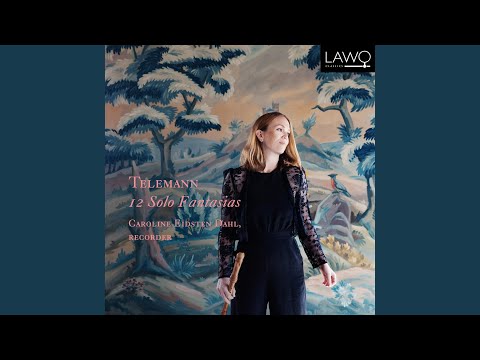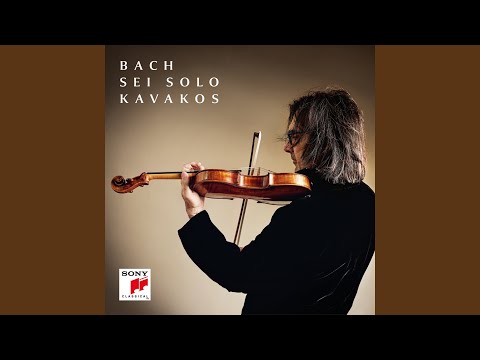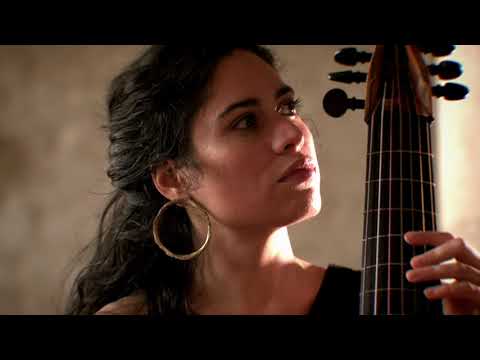- Caroline Eidsten Dahl: “Telemann: 12 Solo Fantasias” (LAWO Classics)
- Jeanine De Bique: “Mirrors” (Berlin Classics)
- Leonidas Kavakos: “Bach: Sei Solo” (Sony)
- Lucile Boulanger: “Solo Bach-Abel” (Alpha)
I’m convinced that, after enough listening to and reading about classical music, we each land on that one composer we can’t stand. Growing up outside of Boston, listening to WCRB as my grandfather’s powder-blue Buick exited on and off of I-95, I soon discovered my musical Moriarty in Georg Philipp Telemann. If I flipped to the classical station midway through a piece that annoyed me for its needlepoint preciousness, I soon learned I could identify it as Telemann before the announcer came on to confirm.
At a certain point, however, it becomes hard to remember exactly why we hate the music we hate. I found myself won over by another side of Telemann in 2012 with New York City Opera’s production of the composer’s “Orpheus.” What had struck me as blandly Rococo at 17 had, ten years later (and with the right performers) now sounded rich, nuanced, and crunchy. What initially had seemed like straightforward musical lines crammed with manicured hedges and grotesque floral arrangements was, in fact, an autumnal labyrinth of corners and cul-de-sacs. I’ve been chasing that sense of discovery with Telemann, of finally getting something that has eluded one for so long, ever since.
At first blush, the composer’s 12 Fantasias for Solo Flute didn’t seem like it would offer the same sense of depth and crunch. It only takes a few minutes of Jean-Pierre Rampal to put me back in the semi-comatose state of so many proper-but-lackluster hours of Telemann endured. But Caroline Eidsten Dahl’s new recording, rendered on the recorder in lieu of the flute, gives these works that familiar, enlightening texture. Likewise, Dahl is at home in the complex tributaries of the composer’s melodic lines, playing with historical reverence but never with historical baggage. The intimacy of this recording is like being in a deep conversation, aware of each word and thought expressed, while remaining blithely oblivious to the time passing.
Telemann isn’t the main focus of soprano Jeanine De Bique’s “Mirrors.” In fact, with a spitfire opening from Carl Heinrich Graun’s “Cesare e Cleopatra,” followed by the lushly plangent “Se pietà di me non senti” from Handel’s better-known “Giulio Cesare,” and the same composer’s coloratura jewel box of “L’alma mia fra le tempeste” from “Agrippina,” Georg Philipp’s six minutes of glory could easily get lost in the shuffle.
That, however, would be a shame. “Rimembranza crudel,” Agrippina the Elder’s aria in Telemann’s “Germanicus,” is a silk thread of agony; luminous and luxurious. The mother and namesake of Handel’s heroine, this Agrippina is not a political schemer, but a political pawn who is falsely accused of infidelity and sentenced to death. Separated from the sum total of love she’s known in her husband (Germanicus) and her son (Caligula), she cries that “the heart doesn’t know how to live at a distance.” Her subsequent lament, built in Handelian fashion around just two lines of libretto, eliminates that distance, stretching ad infinitum to bridge the gaps of physical separation and manipulated misunderstandings. History may ebb and flow, but Agrippina’s heart will always suffer cruel remembrance.
Among my favorite performances of De Bique’s is her electrifying “Rejoice greatly, o daughter of Zion” from the 2017 BBC Proms, which gallops at a fiery tempo without compromising a single note or iota of diction. We get more of that Olympian feat on her debut album, but this moment of almost near-total stillness shows the depth of De Bique’s vocal range and dramatic expression. That’s the point of “Mirrors” as well: De Bique cannily arranges characters from early 18th-century operas—both beloved and B-sided—to create an infinity mirror of related roles, reflecting and refracting their different traits and intents across composers and librettists. It’s a game of historical infinite regression, performed with an exuberantly fresh voice.
In his memoir of mourning and Bach, Philip Kennicott writes: “The older we get, the more subtly we must undertake the double exercise of shedding aspects of ourselves so that we have the capacity to develop new ones.” This is a quote that refers more to the mourning aspect of Counterpoint, however it’s also one that lends itself well to how we might approach Bach (and most historical composers) in 2022.
The latest from VAN, delivered straight to your inbox
At a certain point, it seems every pianist has to take on “The Goldberg Variations.” Every cellist has the six Cello Suites. And every violinist has the composer’s series of sonatas and partitas. I feel like the incredulous Castorinis in the first half of “Moonstruck” when I see these works come up time and again under the header New and Notable: “Again?” Do we really need every pianist to interpret “The Art of Fugue”? Does every violinist need to invest their time, money, and efforts into recording the Chaconne? Is this reliance on Bach just a decades-long object lesson in the old adage that those who don’t learn from history are doomed to repeat it?
The (somewhat unhelpful) answers to these questions: No. No. And, it depends. Bach can be a crutch, but with the right musicians it can also be a chance to undertake another sort of double exercise of shedding aspects of musical tradition to make room for developing new ones. It turns out that Leonidas Kavakos, who waited until his 50s to record Bach’s solo sonatas and partitas, is one of those musicians. Kavakos’s ability to consistently land bull’s eyes with his performances can, in and of itself, start to feel a bit “Again?”-y. Admittedly, I started listening to this new recording assuming I’d be able to correctly predict what I was in for, switch it off within a few minutes, and go on about my day. Instead, however, I was hooked from the prelude to Partita No. 3. The first six notes sound textbook, but then a contrasting tempo and rhythm swoop in from below to finish the call-and-response of the opening, almost as if two separate violinists were trading off in the intertwining lines.
While some pieces speak in images, sentences, or stanzas, Bach’s sonatas and partitas speak in gestures and glances. Kavakos’s tendency to linger in the pauses and savor bow-strokes (never pretentious, always earnest) lends an organic, crackling effect to the music. There’s historicity, but there’s also relevance. Even more electrifying is Lucile Boulanger, who pairs works by Carl Friedrich Abel with a host of Bach arrangements for the viola da gamba. The flickering glimpses cast in Kavakos’s performance roar into a full blaze with Boulanger’s prelude to “The Well-Tempered Clavier” and excerpts from the cello suites. Even more so than Kavakos’s violin (which dates back to Bach’s lifetime), Boulanger’s viol is a capacious conduit for hearing Bach at his most tactile and raw. With each phrase of the music, she takes off years of pious patina. What she develops in its stead is nothing short of sublime. ¶
Subscribers keep VAN running!
VAN is proud to be an independent classical music magazine thanks to our subscribers. For just over 10 cents a day, you can enjoy unlimited access to over 875 articles in our archives—and get new ones delivered straight to your inbox each week.
Not ready to commit to a full year?
You can test-drive VAN for one month for the price of a coffee.





